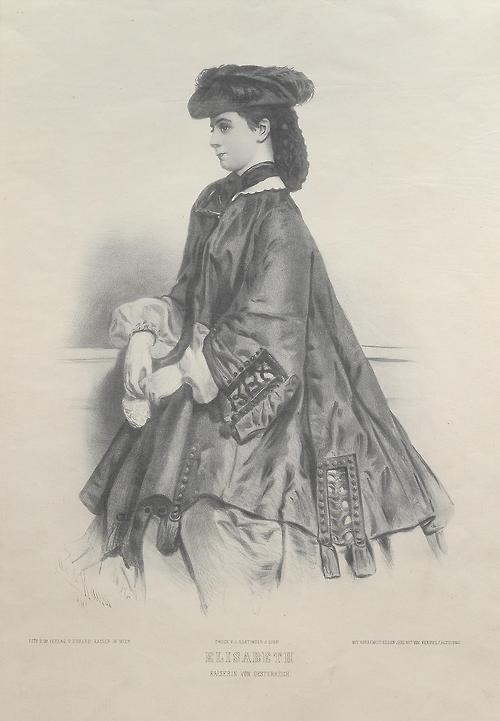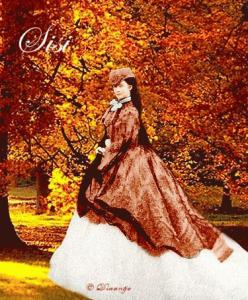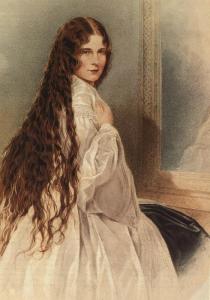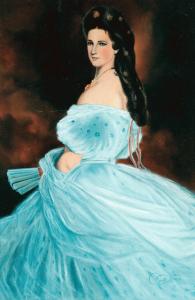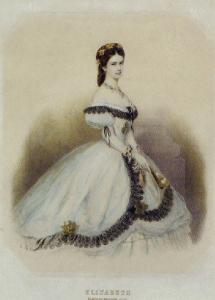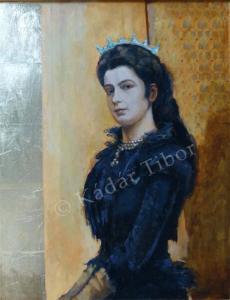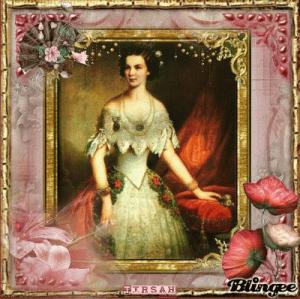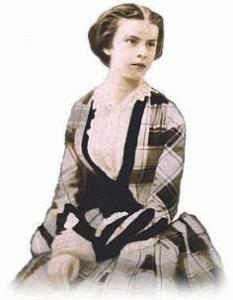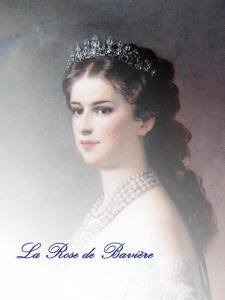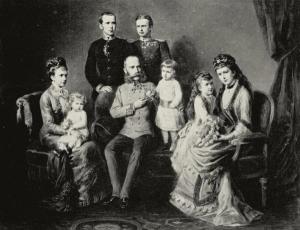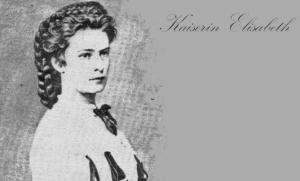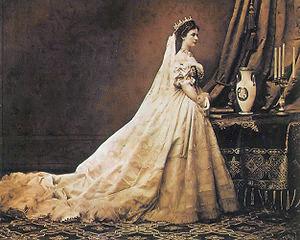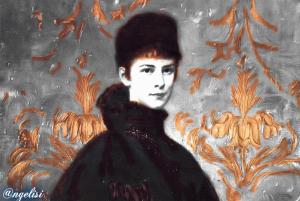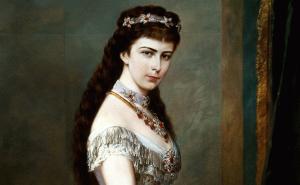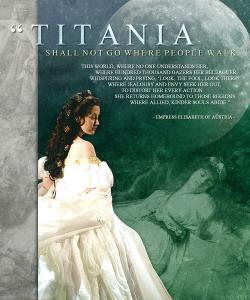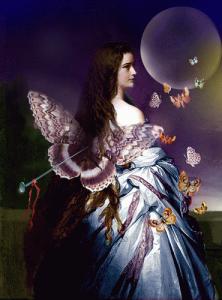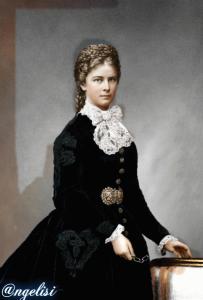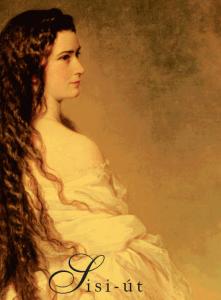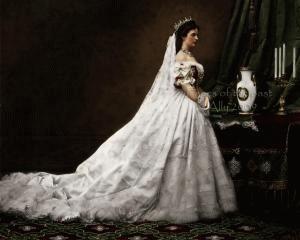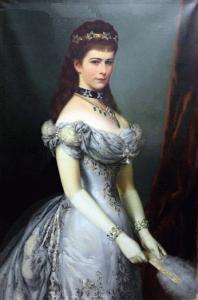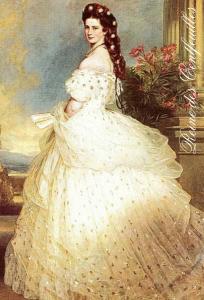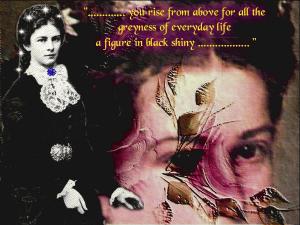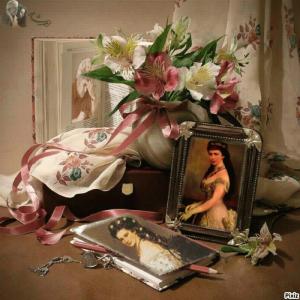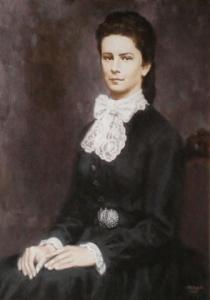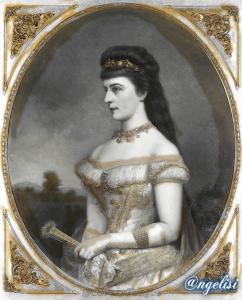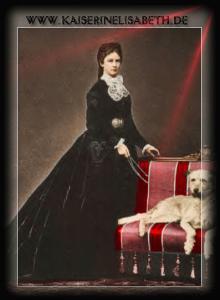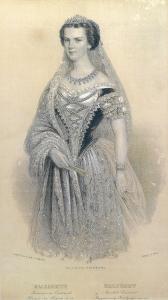Alfred von Koenigsegg-Aulendorf

Alfred von Koenigsegg-Aulendorf
Alfred Joseph Graf von Koenigsegg-Aulendorf (* June 30, 1817 at Castle Aulendorf, † October 27, 1898 in Vienna) was an imperial Major-General and Chief Chamberlain of the Empress Elisabeth.
life
Count Alfred came from the Swabian noble family of the Counts of Königsegg that once belonged to the Kingdom of Württemberg to the lords, and was the son of Hungarian magnate [3] Franz Xaver Karl Alois Graf von Koenigsegg-Aulendorf (1787-1863) and the Hungarian-Maria Anna Josepha Gräfin Károlyi de Nagykároly (1793-1825).
1851 as captain of the "Emperor Ferdinand" cuirassiers No. 4 adjutant, he was aide-1854 Emperor Franz Joseph.
He married on 15 April 1857 in Vienna Pauline Countess of Bellegarde (born April 2, 1830 in Vienna, † May 27, 1912 in Munich), the daughter of Count August von Bellegarde (1795-1873) and the Baroness Julie von Gudenus (1795-1865). Wife Pauline was the granddaughter of the Austrian field marshal and statesman Count Heinrich von Bellegarde (1757-1845). She was her maid of honor since the first days of Empress Elisabeth in Vienna. Against the opposition of the court, the Empress made it in 1862 for chatelaine and her husband to the Lord High Steward. 1883 joined Count Alfred after 1882 occurred death of his elder brother, Count Gustav in the Württemberg Chamber of lords, a, to which he belonged until his death, but never personally appeared there. He settled in the Württemberg Chamber by his son Franz Xaver (1858-1927) represented.
From site: http://de.wikipedia.org/wiki/Alfred_von_K% C3% B6nigsegg-Aulendorf
Pauline von Koenigsegg

Pauline von Koenigsegg
Pauline ("Paula") Marie Countess of Königsegg to Aulendorf , born Countess von Bellegarde (* April 2nd 1830 in Vienna , † May 27 1912 in Munich ) was an Austrian maid of honor .
Life
Pauline Countess Bellegarde was the daughter of August Graf von Bellegarde (1795-1873) and Julie, born of Gudenus (1795-1865). On 15 April 1857 she married the Austrian court official and officer Alfred Graf von Koenigsegg to Aulendorf . In 1862 she appointed Empress Elisabeth for chatelaine , as was her husband Lord High Steward of the Empress. This ranked the couple in the first place in the court of the Empress.
The appointments made for some excitement at court: on the one hand, because the Koenigsegg is not the party of the dominant Empress Dowager Archduchess Sophie were, which thus lost its influence, and secondly, because Countess Königsegg - unlike its predecessor, the Countess Esterhazy Liechtenstein - through marriage but not by birth to the (formerly sovereign) unable magnificent belonged nobility, at the Viennese court absolutely dominated, but nevertheless by their new office before all the ladies at court, including queens, princesses and formerly reigning countesses, ranked what these greatly angered .
Pauline Königsegg was awarded the Order of the Cross Star Award and was a confidant of the young Empress in her early years in Vienna. However, they soon came into conflict with the Hungarian ladies Ida Ferenczy and Marie Festetics that favored the Empress and they ablösten quickly in their favor. In general, it was the Hungarian friends Sisi hostile to, even she did not understand Hungarian .
In the Sissi trilogy of Ernst Marischka (1955-57) Countess of Bellegarde is Senta Wengraf shown.
Descendants:
Pauline Countess Bellegarde and Alfred Graf Koenigsegg had one son:
Franz Xaver Eusebius Johann Baptist Graf von Koenigsegg to Aulendorf (1858-1927)
From site : http://de.wikipedia.org/wiki/Pauline_von_K%C3%B6nigsegg
Sophie Esterházy-Liechtenstein

Sophie Esterházy-Liechtenstein
Sophie Mária Josepha Princess of Liechtenstein, Countess Esterházy of Galántha, known as "Countess Esterhazy" (born September 5, 1798 in Vienna, † June 17, 1869 ibid) was an Austrian Grand Mistress and maid of honor of the Austrian Empress Elisabeth of Austria-Hungary.
Life
Sophie Mária Josepha Princess of Liechtenstein came from the House of Liechtenstein. She was the second daughter and third child of the Austrian Field Marshal Johann Joseph Prince of Liechtenstein, 10 Prince of Liechtenstein, Duke of Opava and Jägerndorf and his wife Josefa Sophie Countess zu Fürstenberg-Weitra.
In 1817 she married Vincent Graf Esterházy Baron Galántha (* 1787, † 1835). Her husband was k.u.k Chamberlain and Major General. The marriage was childless.
Esterházy Liechtenstein was maid of honor and a close confidant of Austrian Archduchess Sophie, the mother of Emperor Franz Joseph I of Austria. From Archduchess Sophie, she was also chosen for the office of Oberhof masters, the so-called "first lady of waiting" at Empress Elisabeth.
In August 1853 she first met the young Sissi when she congratulated her in Bad Ischl for her engagement to Emperor Franz Joseph I. . In April 1854 , she was Elizabeth's master for the protocol of the court . She was almost 56 years old when she received the office of Lady of the Robes and was considered a " strait-laced , ceremonious woman " , besides, she was known for her ultra-conservative attitude. She took over at Empress Elisabeth de facto function as a governess. Elizabeth took from the first moment a deep aversion to Countess Esterházy Liechtenstein ; she felt as a " watcher " . Esterházy Liechtenstein was criticized by individual members of the court as well because of their gouvernantenhaften attitude towards Elizabeth, also , that they dedicate Elizabeth in the family gossip of the high aristocracy tried , though Elisabeth showed no real interest in it , was negatively stated. Esterházy Liechtenstein saw this , however, as one of its tasks. She was , on behalf of Archduchess Sophie , present in April and May 1854 at the honeymoon of Franz Joseph I and Elizabeth Castle Laxenburg to report any violations of the Empress of etiquette to Archduchess Sophie can .
In June 1854 , she accompanied the Emperor and Empress on his first foreign trip to Bohemia and Moravia. In winter 1860 , she was informed of Empress Elisabeth that she would not accompany them on their trip to Madeira and that it would , represented by another maid of honor , the young Mathilde Windisch- Graetz to . During Elizabeth's stay Madeira they took over , according to the instructions of Archduchess Sophie , the education of the two children of Elisabeth, Archduchess Gisela of Austria and , together with Baroness Caroline Walden, the Crown Prince Rudolf . In November 1861 - Archduchess Sophie had been able to push through this time - they traveled together with Emperor Franz Joseph I and the two children Gisela and Rudolf to Elizabeth, who was staying since the end of October 1861 in Venice , detail from there she reported Archduchess Sophie Elisabeth and their children. During the stay in Venice there were multiple disputes between you and Empress Elisabeth because of the educational methods of the Countess. Esterházy Liechtenstein insisted that the arranged of Archduchess Sophie educational principles were strictly adhered to. Elisabeth then demanded the dismissal of the Countess. Beginning in 1862, probably in the course of January, 1862, Esterházy Liechtenstein was released by Emperor Franz Joseph I as Mistress of the Robes. Her successor was Pauline von Koenigsegg, Countess Bellegarde. Emperor Franz Joseph I said goodbye personally to her, thanked her for her service and presented her with a token of his gratitude a valuable bracelet with his portrait. Esterházy Liechtenstein returned then from Venice to Vienna.
She died in June 1869 in Vienna and was buried in the family vault in Liechtenstein'schen Wranau. At her funeral in Wranau in Liechtenstein tomb Emperor Franz Joseph I and Empress Elisabeth were present.
Reception
In literature and film, but also in the musical, Countess Esterhazy has been shown repeatedly, in particular their relationship to Empress Elisabeth was discussed.
In the two Sissi films Sissi - The Young Empress (1956) and Sissi - Fateful Years of an Empress (1957) she was played by the Austrian theater actress Helene Lauterböck. Their role in the Sissi films is designed as a classic supporting role and is broadly in line with the history. She is depicted as a strait-laced governess who shall ensure compliance of court ceremonial
In the two-part historical drama Sisi (2009) directed by Xaver Schwarzenberger their role has been significantly upgraded. The role was played by Franziska Stavjanik. Her performance received positive reviews. [ Countess Esterhazy is here first the confidant of the Archduchess Sophie, on whose behalf it is to impose Elisabeth in court ceremonial. At the same time they should report accurately report the Archduchess Elizabeth of every step. As the story progresses, however, the emergence of a trust relationship between the two women is described, however, this is not historically guaranteed. Countess Esterhazy is used to confidant and friend of the Empress. She opens her doors at the court of Elizabeth's independence and support plans for Hungary.Due to the liberal attitude of Empress Elisabeth and their partial use of Hungarian as the language of the court as "the rebellious spirit of [Countess] Esterházy awakened" is in the film, as Stavjanik in an interview characterized her role. In a conversation Archduchess Sophie Countess Esterházy turns against them and supports Empress Elisabeth in their desire to take their two young daughters Gisela and Sophie on the planned trip to Hungary. You will then be relieved of their duties Archduchess Sophie, but Elizabeth is committed to it. In her last scene, she takes leave of the Empress Elizabeth, regretted her activities as an informer and says that she was the Empress's not a good friend.
In the musical Elisabeth, she received a supporting role as Countess Esterhazy. In duet with the Archduchess Sophie in 1 Act 8 Scene and their other short scenes, the pressure of the court visible.
From site : http://de.wikipedia.org/wiki/Sophie_Esterh%C3%A1zy-Liechtenstein
The hairstyle of Sisi to influence the fashion of her time

The hairstyles Sisi

FANNY ANGERER: the hairdresser exclusive Sisi
A true cult was that Sissi had for her hair, the color of which changed with the passage of time from one shade to brown biondoscura and over the years ended up arrivarle ankles. And only a hairdresser who knew all the secrets of his profession could put in order this mass of hair, keep them healthy and in artistic weave hairstyles. The complicated hairstyle Sissi, with long braids coiled on the head, became the famous "hairstyle Bulletin sought," as she called it, hairstyle frequently copied at the time, but almost always with little effect. In fact, there were few women who had hair so healthy and robust, time and patience to care for them, and also an artist as a hairdresser, as was the provision of Elizabeth. Efforts to keep in order those famous hair was enormous. Washing the hair, once every three weeks (with new and expensive essences, but in the end the choice fell on cognac and eggs), called for a full day, during which the Empress could not be disturbed for any reason. Combing daily required a minimum of three hours. The hairdresser became an important figure at court. From his art depended to a large extent the mood of Elizabeth. Nothing, in fact, more annoyed Empress hair sometimes fell, a bad hairdo or a hairdresser dua that it would not be nice. Sissi found Fanny Angerer, who was to later become his favorite hairdresser, the Burgtheater. During the performance of a play, Empress noticed the hairstyle exceptionally beautiful part of the protagonist, Helene Gabillon. So he wanted to know the name of the maker of that hairstyle. It was the young Fanny, "a girl looking provocative" and "lively spirit", the daughter of a hairdresser in the district Spittelberg, and more recently the theater hairdresser Palace. To Fanny come to court there was a long back and forth, which also came to the ears of the public. (...) Fanny Angerer became the most famous hairdresser of the monarchy. His contribution to the beauty of Sissi was not to be underestimated. The society ladies fought to gain the favor of Fanny and be too combed from her: only on special occasions, of course. The Angerer not only was able to create the most elegant and elaborate hairstyles with braids in Vienna, but also knew how to deal with considerable insight the Empress, a person well known to be "difficult." In his work he also served in various tricks. Thus, for example, made disappear on the sly under the apron hair remained attached to the comb, appiccicandoli on a strip of gummed paper, to show the Empress then at the end of a comb combing absolutely devoid of hair. Soon, Sissi became comb only Fanny Angerer and no one else, getting to the point of not wanting to appear in public during official occasions when Fanny was sick in bed and could not do her hair. So the Empress began, in a way, to depend on Fanny. When the hairdresser is irritated for some reason, it looked ill and sent the Empress another hairdresser. Or the task of caring for the hair of Sissi was hired by a chamber musician and that he always carried a minor niggles. Elizabeth Christomanos: "After some of those days in which I get from other people combed back malleable. You know it and wait for my capitulation.'m A slave to my hair." For Elizabeth, the hair was the culmination of his beauty. Nothing was so proud of how much of the mass of hair that enveloped like a cloak when it melted. Until the end of his days combing daily for Elizabeth was a "religious function", as told in his flowery language the reader greek Christomanos. (This was in the 90s the position to take advantage of the hours devoted to Empress hair to make conversation exercises and translation in greek). Christomanos: "Behind the chair of the empress stood the hairdresser (Fanny) who wore a black dress with a long train and a white apron of gauze. Though engaged in a menial task, it was an imposing figure with traces on the face of beauty faded and her eyes full of resentment claims .. poking his fingers through the waves of white hair, lifted up and caressed them as if he were touching velvet and silk, wrapped them around his arms like so many rivulets that she wanted to hold not only because they seemed eager to run, but even to fly. " Following a lengthy description of the operations to comb his hair. "Then he carried on a silver platter the dead hair of the lady because it saw them, and the eyes of the mistress and the maid interbred for a moment, one, those of the lady, full of a silent reproach, the other , those dellla servant, marked by a sense of guilt and repentance. then, the white mantle of lace was lifted from his shoulders and the black empress emerged like the statue of a goddess from the package.'s sovereign bowed his head, the servant slumped on the floor, whispering softly, "I'm at the feet of Your Majesty," and so the sacred function came to an end. "Feel my hair," said Elizabeth Christomanos, "It's like if I had a lump in the head." Christomanos: "Your Majesty wears his hair like a crown instead of a crown." That mass of hair was so heavy as to be sometimes a headache to Elizabeth. In these cases would sit for hours in the morning in his apartment, with hair held up with ribbons. was so reduced the weight of the hair and head aching received some air. From the site: http://capellidifata.it/forum/index.php?topic=5382.215; wap2




